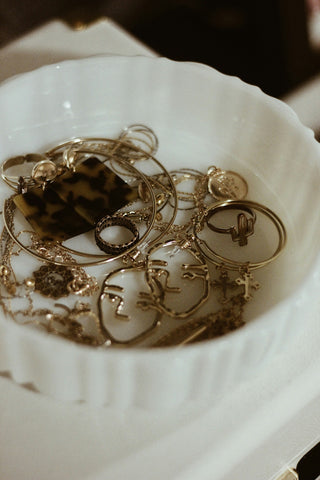
Gold has various properties. It is a good conductor of electricity, it does not oxidize or lose its shine or color, and it is extremely malleable. The history of gold goes way back to 4000 BC where we don’t exactly know it’s origin but is believed to have discovered in rivers and streams as lopsided nuggets. People were attracted to this metal due its luster. They then discovered ways to mould it into different shapes and make decorative objects and eventually idols of worship as we have seen in historical photos and ruins of ancient civilizations in India, Persia, Northern Africa and Europe. Gold jewellery also had existed by that time as a esteemed part of the culture, soon after people discovered gold. Gold jewellery is believed to have originated in the Persian and Egyptian culture. It was only in 1500 BC, Egyptians made it the first official medium of exchange for international trade. Egypt created what was called the Shekel, a coin which weighed 11.3 grams, and became the standard unit of measure in the Middle East. After this, through many millennia, many other civilizations and countries made their own gold coins. Romans had the Aureus, Great Britain had Florins, Florence had the Ducat. As with all things, humans maximized on the value of gold. Babylonians discovered a way to test the purity of Gold which is used till date called fire assay.

Egyptians created a way to mold gold through lost-wax casting which could replicate jewellery, vases, sculptures, and idols intricately from their respective wax counterpart and is also used today.
Clearly gold was very popular and came to be known as a valuable asset by 17th century AD. Gold was just found in nature, in people’s backyards and mined thereafter. Whoever mined this gold and could turn it into coins, whether a government of a country or a regular individual could use it in exchange for things. However, due to this, intervention was required on a global scale. How many grams, purity, or what shapes was an accepted form of valuable tender. In 1696, ‘The great Recoinage’ tried to fix this problem but with no success as it was very difficult to keep track of these standards. This led to the adoption of paper money or flat money. Thus began the rise of the ‘Gold Standard’. This was a monetary system in which standard economic unit of account, for example the U.S. Dollar, was based on a fixed quantity of gold. With this system it was very easy for people with any amount of gold, with a test of purity, to exchange it for their preferred currency. This remained stable for a while, until the first world war.

The first world war led to countries uncontrollably printing paper money in order to further their goals within the war. This created hyperinflation. This is when it was realized that the gold standard cannot hold up during turbulent times. Yet, not all nations were ready to give up entirely on the Gold Standard as they appreciated the stability that came with it. Soon after came the Great Depression which finally led to the abandonment of the Gold Standard. People lost confidence in banks and paper money and started collecting gold, which in turn led to gold prices as a commodity to rise significantly. This led to a series of events with nations were forced to abandon the Gold Standard. Eventually, after the second world war the Bretton Woods Agreement was created and the U.S.Dollar was then made the currency of the world.
Gold has a rich past from being nuggets in a river to being the currency of the world, even today. It has so many purposes from being molded into the most exquisite jewellery pieces to being a thin protective layer for Astronauts’ gear to reflect away the sunrays. In every way it is most definitely a valuable commodity and when one can show it off on themselves as a part of their heritage and grandeur in the form of jewellery, why wouldn’t they? Gold is extremely versatile in jewellery as well. Various alloys of gold give it the different colors and properties we see today. Examples are rose, white and yellow gold. With different parts of the world having different minimum requirements of gold alloyed into the jewellery one can have different prices for different types of jewellery according to the weight of the metals alloyed with it like platinum, copper, or silver.

Diamonds and gold also go hand in hand and while buying jewellery, and it must be kept in mind that different polishes of gold enhance different coloured stones or diamonds. Its extreme malleability gives it the property of being turned into the most unique pieces of jewellery like the zipper necklace by Van Cleef & Arpels or the different variations of flexible and convertible bangles and chains we see today. In the near or distant future gold will not cease to lose the reputation it has been building up for many millennia and till today it is considered a treasured asset whether worn as an accessory or kept as blocks in the safe.


